Common Jazz Chord Progressions - there is a lot more common between songs than you might think. This lessons show some common progressions and the jazz standards that use them.
Common Jazz Chord Progressions - there's a lot more common between songs than you might think. This lessons show some common progressions and the jazz standards that use them.
Available for Premium Site Access Plans Only
II V I and unresolved II V
Too numerous to actually list songs with this progression. The V to I, Dominant to Tonic chord movement IS the most common progression in western music. Occurs either major or minor. Examples: Dm7 G7 Cmaj7 (Major), Dm7b5 G7 Cm7 (Minor)
A great song to show a lot of II V movements is
I VI II V
- I Got Rhythm ( A section )
- Blue Moon
- You Send Me
Backdoor Changes
Road Map: I ↑P4 ur(II V) kc I
Based on the minor third substitution principle, a bVII7 is a substitute for a V chord. The II (IVm7 or IVm6) of the bVII is typical A quasi II V Used to return to the key center after a IV chord. Can also be used unresolved.
Returning to a I after a IV chord
- A Foggy Day
- All The Things You Are
- Blue for Alice
- Confirmation
- Cherokee
- Donna Lee
- I've Grown Accustomed to Her face
- Just Friends
- Just The Way You Are
- Lil' Darlin
- Meditation
- Misty
- Moon River
- One Note Samba
- Seven Steps to Heaven
- There Will Never Be Another You
- Wave
Sub for V or II V
- Darn That Dream
- Days of Wine and Roses
- Embraceable You
- Four
- Groovin' High
- On Green Dolphin Street
- Over the Rainbow
- Shadow of Your Smile (The)
- Stardust
- Summer Samba
- Tenderly
- When Sunny Gets Blue
Unresolved
- Desafinado
- Four On Six
- Joy Spring
- How High The Moon
- Ornithology (same changes as How High the Moon)
- Lady Bird
- Valse Hot
I II7 II V
Road Map: I ↑ M2 7th prime II V I
V of II Secondary Dominant
- Desafinado
- Jersey Bounce
- Take the 'A' Train
- The Girl From Ipanema
- Watch What Happens
Descending Whole Step Modulations
Road Map: II V I prime' II V I prime' II V ...
- Afternoon in Paris
- Alone Together
- Bluesette
- Call Me
- Cherokee (bridge)
- How High The Moon
- Invitation (bridge)
- Once I Loved
- One Note Samba (bridge)
- Recorda-Me
- Solar
- Tune Up
- Watch What Happens (bridge)
- Wave
- What Is This Thing Called Love
I I7 IV, I (II V of IV) IV, cadence to IV
Road Map: I ↑ P5 II V I - V of IV Secondary Dominant
- I Got Ryhthm
- Misty
- Scrapple the Apple
- Stompin' At The Savoy
- Sweet Georgia Brown
- The Flintstones Theme
Satin Doll Bridge
Road Map: ↑ P5 II V I ↑ M3 ur(II V) turnnback to key center
Wave Bridge
Road Map: ↑ P5 II V I prime' II V I turnnback to key center
- Love Man
- One Note Samba
- Tune Up
- Wave
Piardy Third
Road Map: IIm7b5 V minor II V resolving to a major I
- Bluesette
- How High The Moon
- What's New
Rhythm Changes
Road Map: I ↑ P5 II V I
- Oleo
- Scrapple the Apple
- I Got Ryhthm
- Stompin' At The Savoy
- Sweet Georgia Brown
- The Flintstones Theme
Related Lessons, Videos, Lesson Series, Songs, Books & Reference Charts, Resources & Assets, Workshops are below.

Modular Phonetic Rhythm represents a significant advance in the teaching and application of rhythm. Eliminating many inefficient aspects of rhythm education, Modular Phonetic Rhythm streamlines the traditional educational approach, resulting in a reflexive reaction to rhythm.
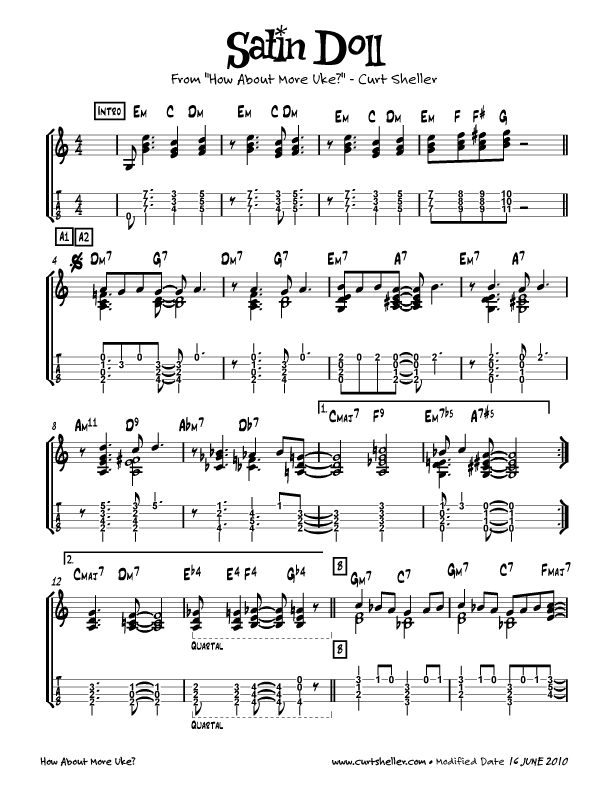
Satin Doll - is a jazz standard written by Duke Ellington and Billy Strayhorn with lyrics by Johnny Mercer. Written in 1953, the song has been recorded countless times, by such artists as Ella Fitzgerald, Frank Sinatra, 101 Strings, and Nancy Wilson. Its chord progression is well known for its unusual use of chords and opening with a ii-V-I turnaround.
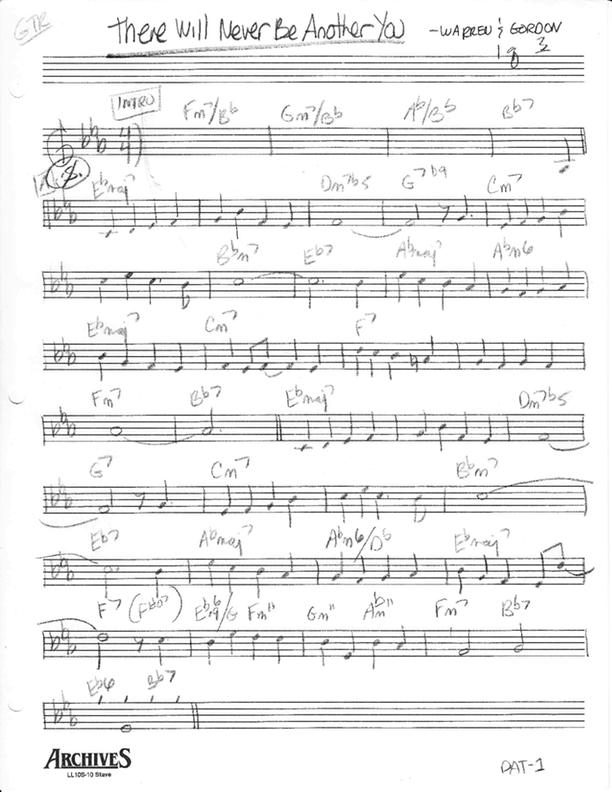
There Will Never Be Another You is a popular song with music by Harry Warren and lyrics by Mack Gordon for the Twentieth Century Fox musical Iceland (1942) starring Sonja Henie. The song was published in 1942, and is one of the most widely known and performed standards of the jazz repertoire.
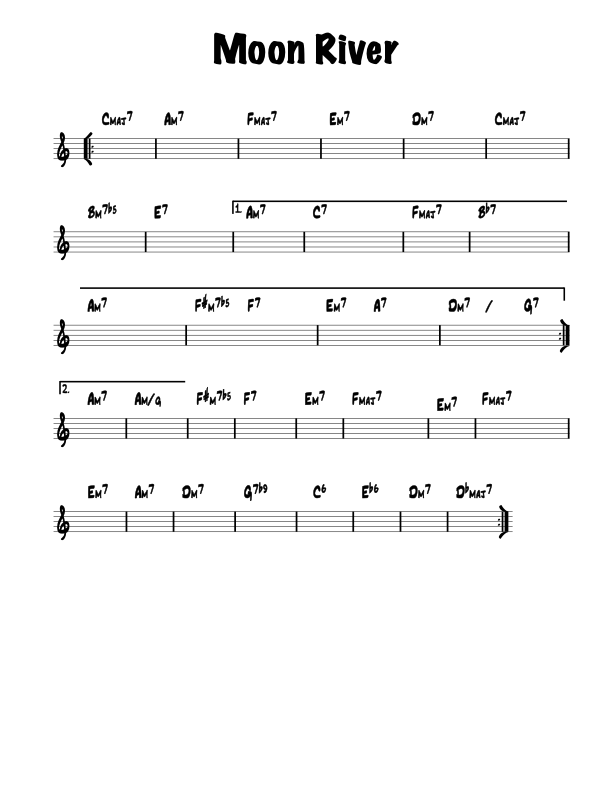
Moon River is a song composed by Johnny Mercer (lyrics) and Henry Mancini (music) in 1961, for whom it won that year's Academy Award for Best Original Song. It was originally sung in the movie Breakfast at Tiffany's by Audrey Hepburn, although it has been covered by many other artists. The song also won the 1962 Grammy Award for Record of the Year.
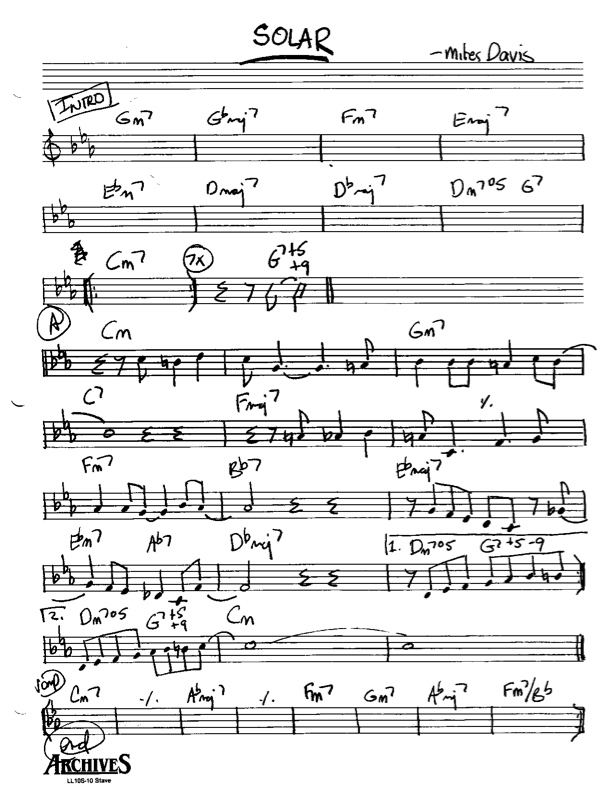
Solar is a musical composition attributed to Miles Davis on the studio album Walkin' (1954), considered a modern jazz standard. The tune has been played and recorded by many musicians including his former bandmates/collaborators Lee Konitz, Bill Evans, Dave Holland, Keith Jarrett or Jack DeJohnette.
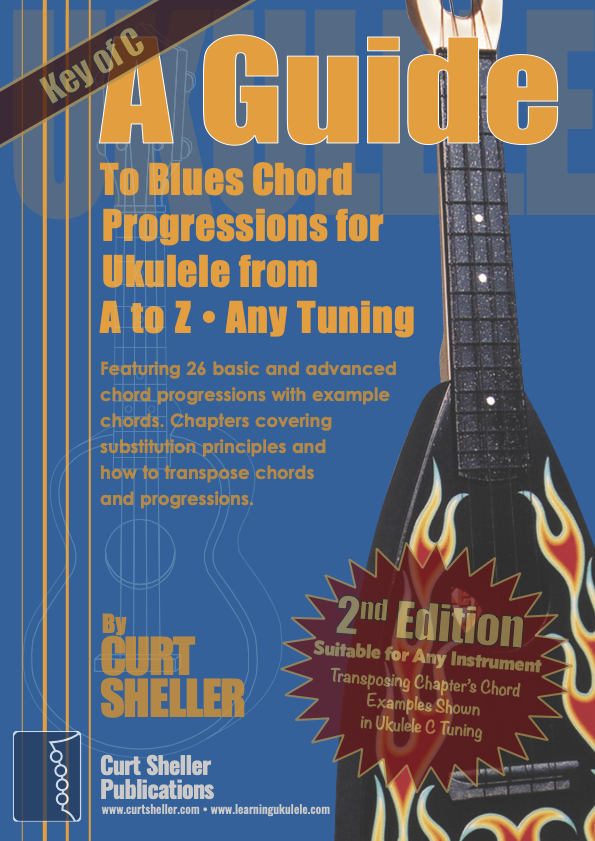
The Blues are at the heart of all American music. It has influenced Country, Rock, Folk, Jazz, Bluegrass and just about every form of American music we listen to today. 26 blues progression in C and G tuning, progressing from basic to advanced jazz progression, with chord grids and substitutions explained.
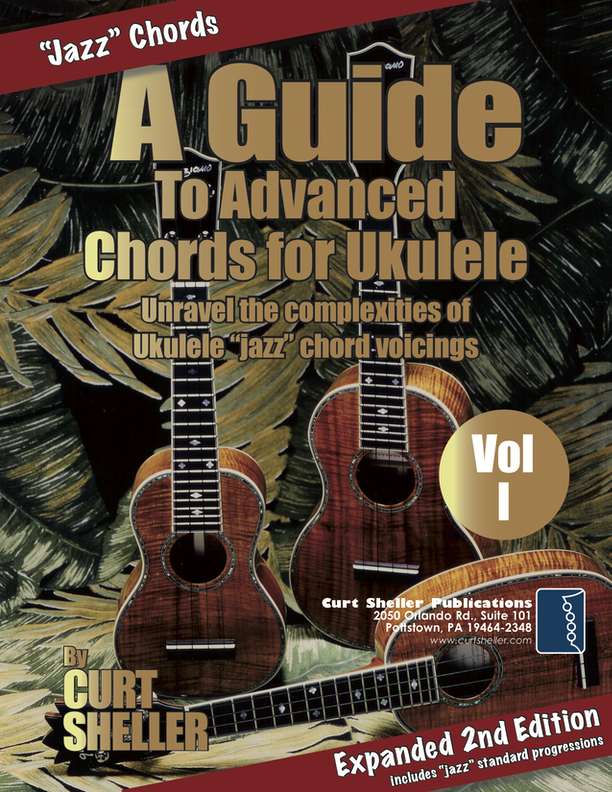
Beyond learning basic Ukulele chords, most players struggle with advanced chords. Commonly called "jazz" chords, these more sophisticated voicings find a wide use in all forms of music. A Guide to Advanced Chords for Ukulele - presents a highly organized and efficient approach to the mysterious subject of advanced chords. Chord dictionaries are not the answer.
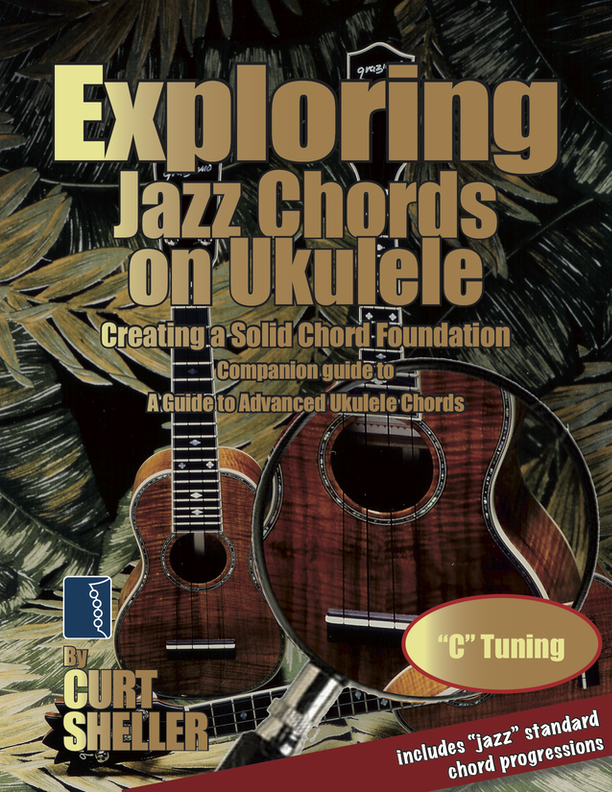
Exploring jazz chords using a variety of common chord progressions based on songs from the standard jazz repertoire. Core Chords are the basic set of chords needed to play a wide range of music, in a variety of styles. This set of chords includes basic open position chords, basic movable form chords and the core 4-part "jazz" chords.

Harmonic Analysis is the understanding of the functional sequence of chords. It is the process used to analyze the harmonic structure of a progression, song or composition. This analysis is then used to make scale selections for improvisation and chord substitution.
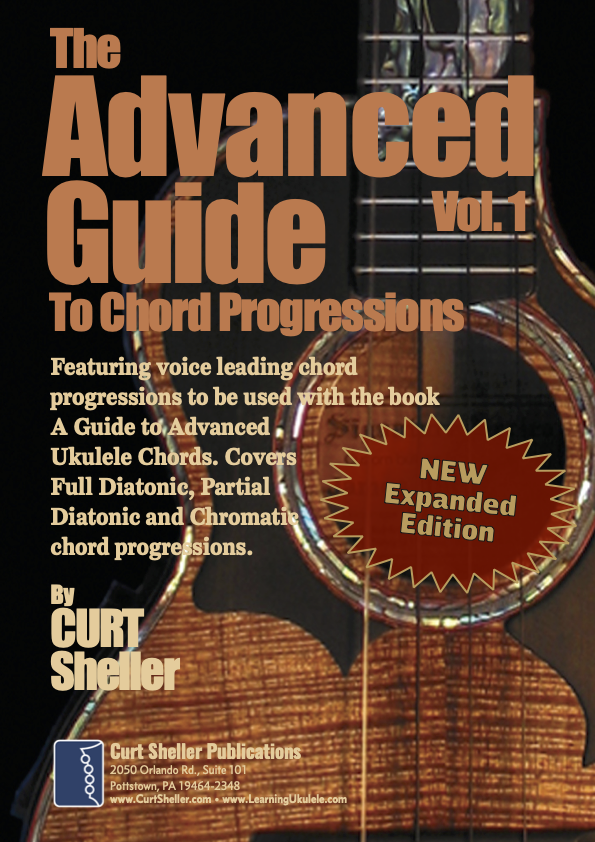
Before individual chords become the background of songs, they must be put into orders called chord progressions. The Advanced Guide to Chord Progressions for Ukulele organizes progressions according to string family, position, voice leading and chord magnetism.


return in your investment)—it is this— learning the
f*ckingnotes of your OWN instrument. Sorry for the tough talks—but it is sooooo true!


Learn to read single note melodies in the first/open position is a lot easier than you might think. Book: Ukulele – Reading Music Series – Primer

An organized collection of daily practice and reference material for the contemporary ukulele player for developing the vocabulary and knowledge necessary for single note playing. Book: Daily Practice Material for the Contemporary Ukulele
Checkout the Books & Reference Charts for additional Handy, Dandy Reference Charts.

Ukulele Fingerboard Chart for C Tuning, Low or High G – G C E A

Ukulele Fingerboard Chart for G Tuning, Low or High A – D G B E

A handy reference chart of all 15 major and relative minor key signatures. US Letter 8.5 x 11 sized (ANSI-A) , A4









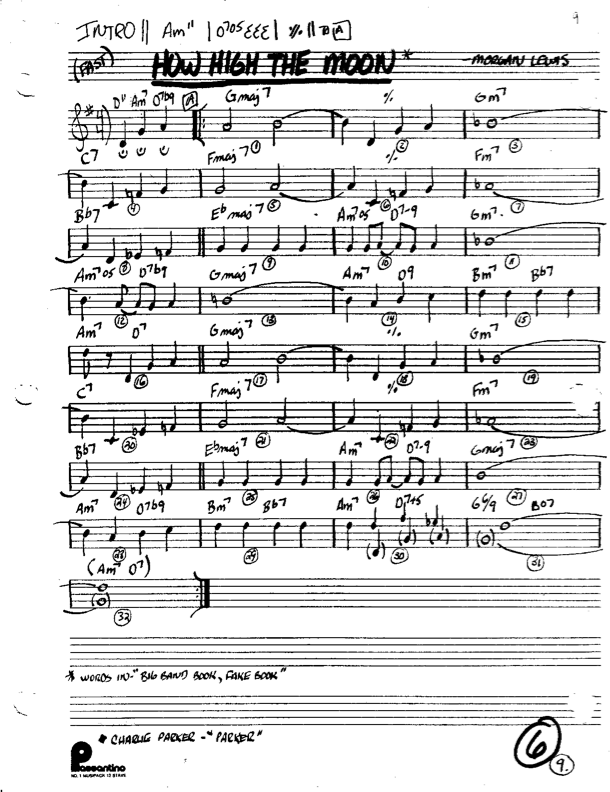
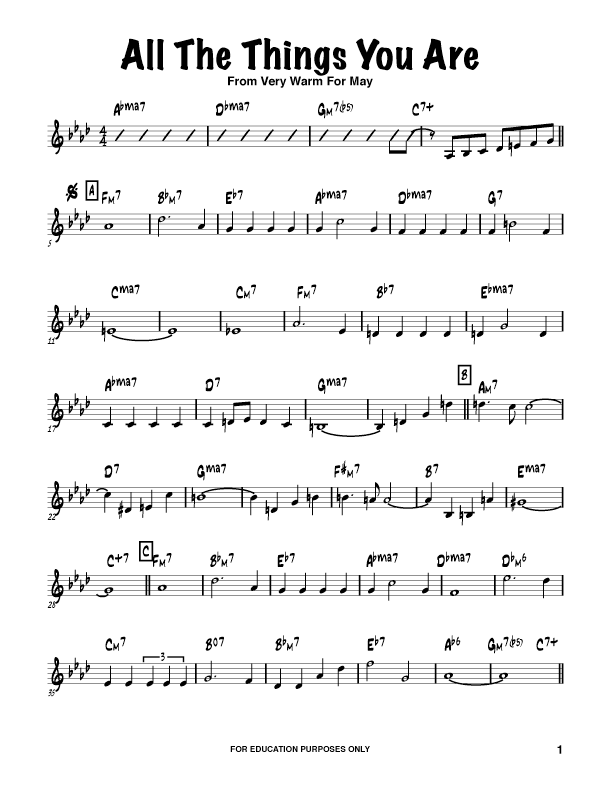
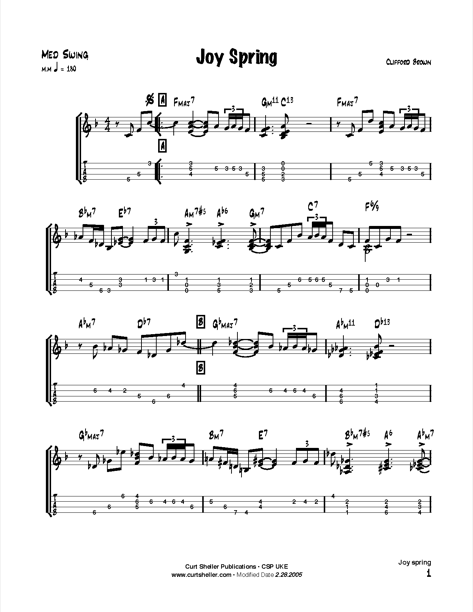


.jpg)